| Grenadier |
| (.375 member) |
| 07/05/12 01:09 PM |
|
|
|
|
I have already counted pellets in a 30" circle at 40 yards to determine what the "rifled choke" was producing. So, today, I wanted to see what sort of patterns I was getting at a more realistic 30 yards and where they the pellets are hitting.
The setup. I folded butcher paper so that it gave me a 24"x24" square containing four 12"x12" squares. With some additional folds I had a quadrant system made up of horizontal, vertical, and diagonal lines running through the center of the big square.
I used a 3"x3" red sticker as a "focusing" point. I didn't aim at the sticker. Instead I looked at it, brought the gun up, pointed, and shot when it seemed right to shoot.
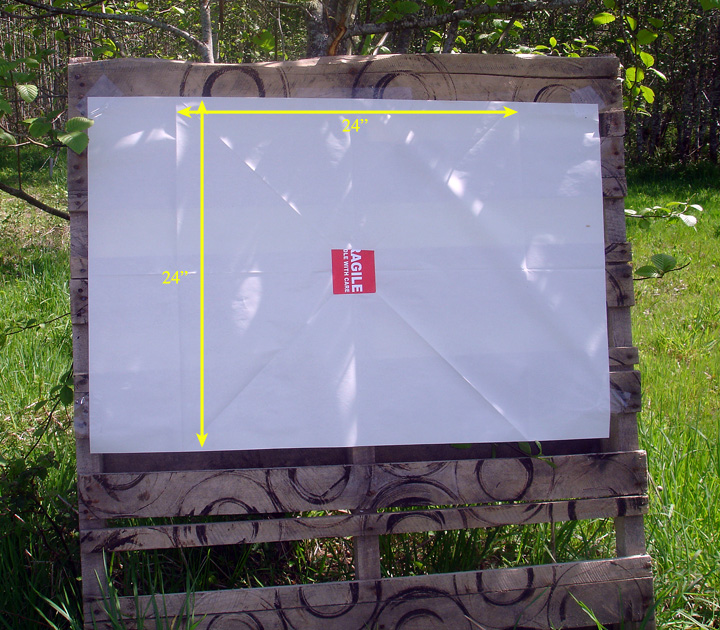
I thought about elevation. We don't often shoot just a few feet above ground level. So, I put the target in a location that would make it about 18 feet higher than the position I was shooting from. That isn't very high but it is probably about as high as I end up shooting most walked up birds and a better shooting test than just firing at shoulder level.
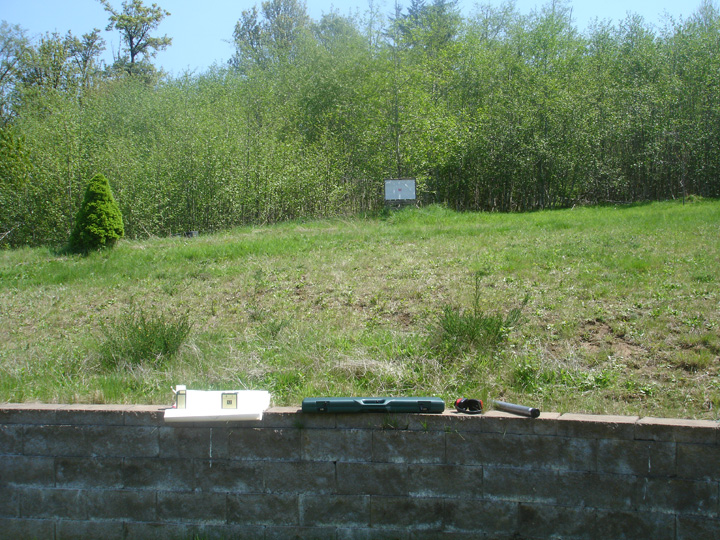
This time the targets were not shot to determine how many or what percentage of the pellets were striking within a given area. I already did that above. I now wanted to determine the general point of impact of the pattern. Accordingly, three shots were fired on each target. I did this to average out inconsistencies in my shooting technique (mitigate imprecise shooting) and to make the areas of shot concentration easier to see.
First, I fired some of the 15/16oz Light Loads at a distance of 25 yards. For these shots I pulled the trigger while keeping the red sticker in focus and visible the whole time. As a result, the shots were all fired low. Therefore, please disregard the low elevation because it was "operator error" . What I discovered was, that at that distance and with that load, the right barrel shot to the left of where the gun was pointed. I repeated the test three times and confirmed this with the same results. I think this was happening because the Light Loads weren't producing enough recoil for the gun to shoot to where it was regulated to shoot (see the next test).

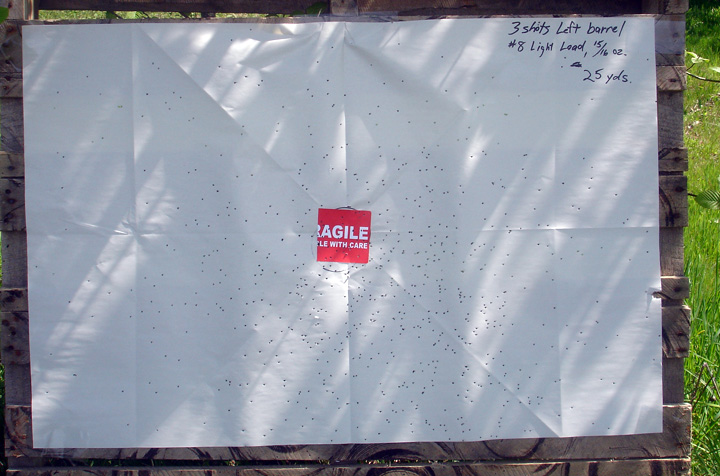
Next, I tried some 1-1/16oz Holland & Holland 'Royal' Game loads and moved out to 30 yards. I also changed the way I was shooting. This time I pulled the trigger just as the gun covered the red sticker. I remember the instructor at the H&H shooting grounds telling me to do this and I remember it worked well there. As you can see, the shot hit right where it was supposed to. These loads produced more recoil and must be closer to what the gun was regulated for. I think these are some very nice patterns and spot on. It never ceases to amaze me how one can get patterns so nice from a Paradox gun in spite of the rifled choke.
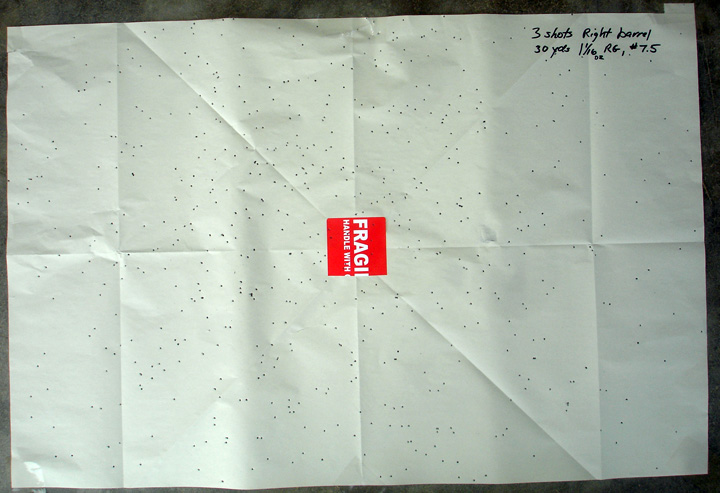
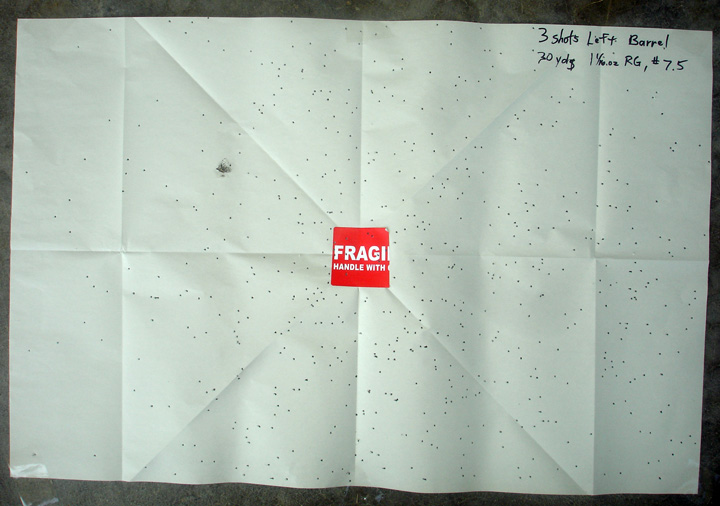
All targets would show better point of impact if I could shoot more consistently. I'm still learning.
I like the ease with which I was able to set this up. I also like the way that I can get such a nice 24" square with quadrants just by folding the paper. I will use this method again.